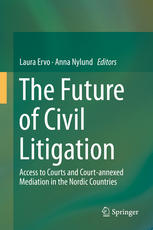

Most ebook files are in PDF format, so you can easily read them using various software such as Foxit Reader or directly on the Google Chrome browser.
Some ebook files are released by publishers in other formats such as .awz, .mobi, .epub, .fb2, etc. You may need to install specific software to read these formats on mobile/PC, such as Calibre.
Please read the tutorial at this link: https://ebookbell.com/faq
We offer FREE conversion to the popular formats you request; however, this may take some time. Therefore, right after payment, please email us, and we will try to provide the service as quickly as possible.
For some exceptional file formats or broken links (if any), please refrain from opening any disputes. Instead, email us first, and we will try to assist within a maximum of 6 hours.
EbookBell Team

4.1
60 reviewsThis book offers an analysis of the current trends and developments in Nordic civil litigation and is divided into four main parts. In the first part a picture of the current civil litigation landscape is provided by focusing on whether there is a truly Nordic form of civil litigation, the current state of Nordic civil litigation, the recent major reforms of civil procedure legislation and the effects of Europeanization. In the second part, the way rules on court-connected mediation have been implemented and practiced in the Nordic countries is discussed. The authors offer their insights on why court-connected mediation has not been fully embraced by Nordic lawyers and the Nordic approach to this type of mediation is contrasted with the Austrian and German approaches. In the third part, recent developments affecting access to justice in the Nordic countries are discussed. Among the topics are changes in legal aid schemes, the impact of recent civil procedure law reforms, hindrances for larger companies to use litigation as a method of dispute resolution and differences in costs and delays. Additionally, Alternative Dispute Resolution and Class or Group Actions are explored as methods to enhance access to justice. The potential adverse effects of Alternative Dispute Resolution and Group Actions are also examined, both in a Nordic and European context. In the final part, conclusions are drawn from both historical and future-oriented perspectives.